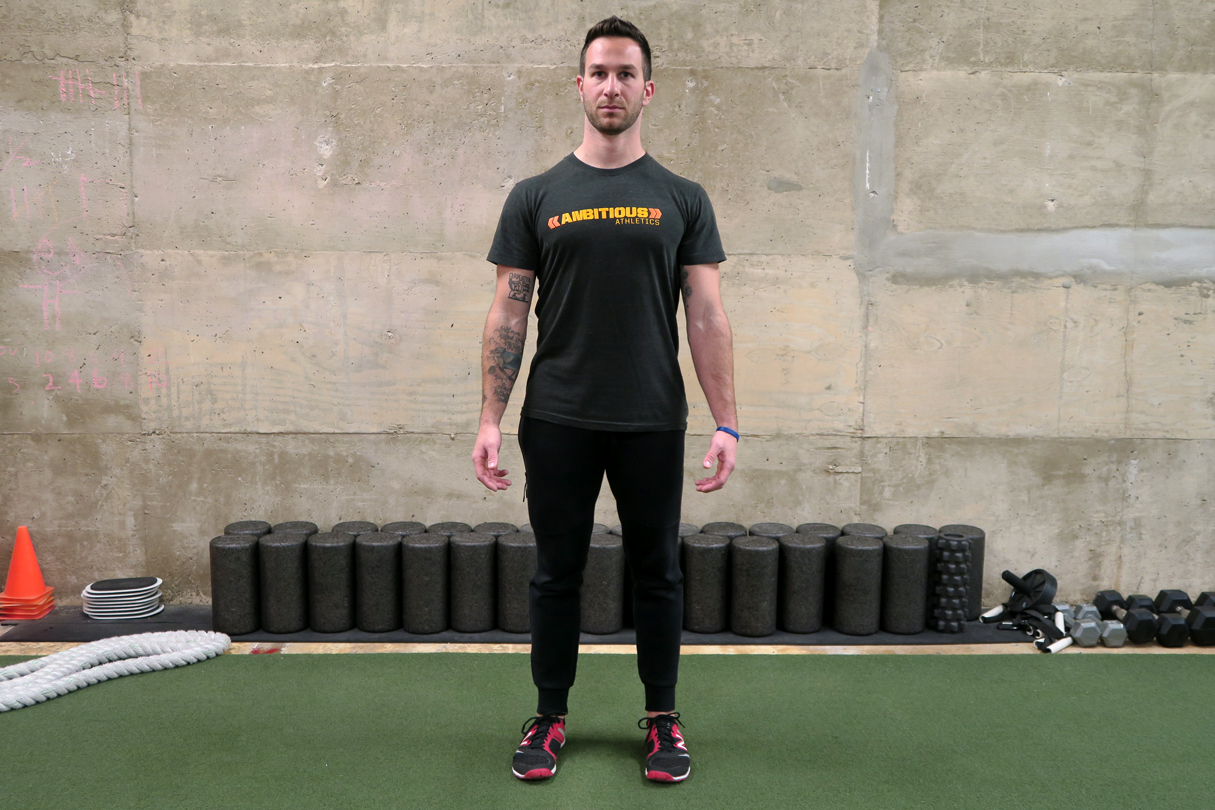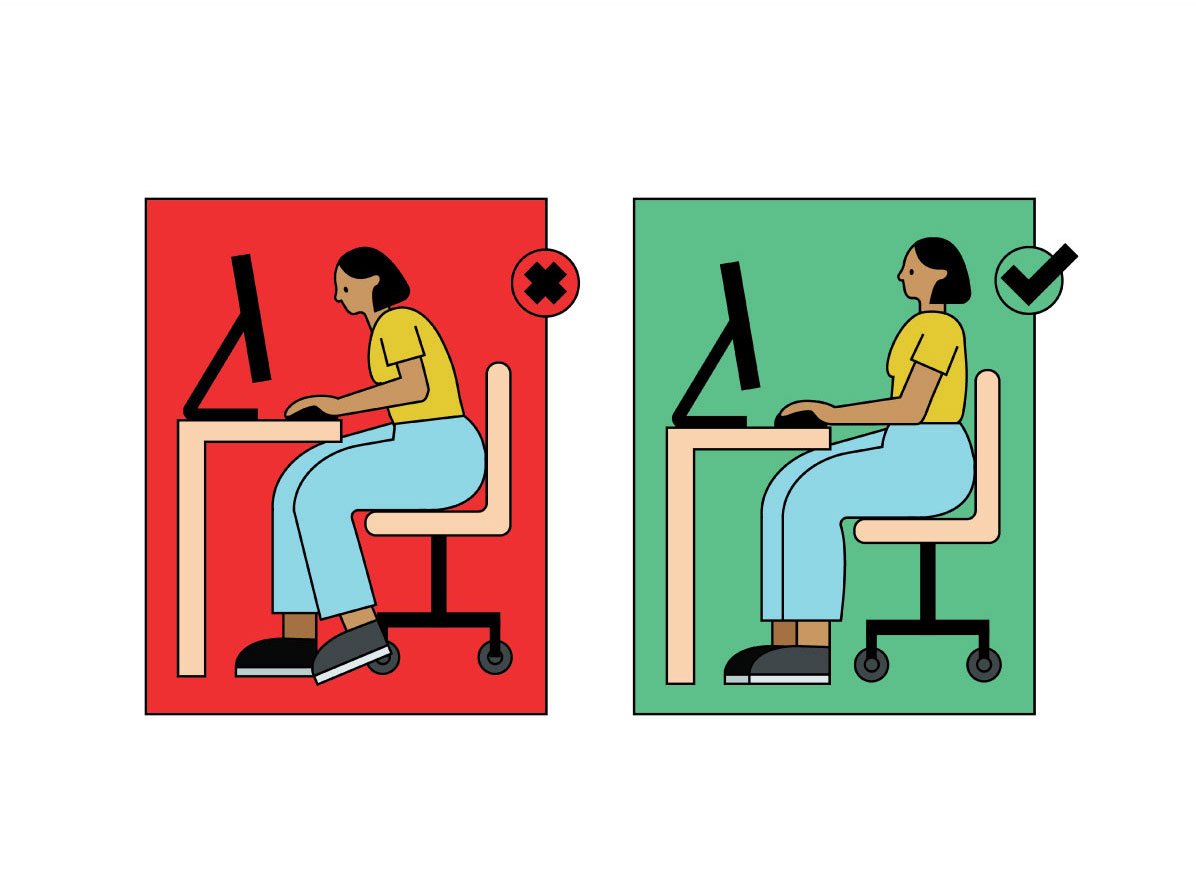Perfect posture—which enhances blood flow, breathing, and movement to name a few perks— is a hard feat, especially with a desk job and limited exercise. Endless sitting reinforces an internal rotation—when your extremities start to curl in towards your center—mainly because only the frontside muscles are being used. “Working the muscles we can’t see will help the muscles we can see,” says Carmen Sturniolo, owner of Ambitious Athletics. Use his five tips to help your posture.
1. Examine your posture.
Good posture means full-body alignment, not just a straight back. “Everything should be stacked over your ankles,” says Sturniolo. What exactly does that look like? Here’s the breakdown:
—Weight should be distributed into a 70:30 ratio. Seventy-percent of your weight should under your ankle, 30-percent in your toes, says Sturniolo. Be aware that running shoes generally put a 14- to 21-millimeter hike in your heel, shifting your weight forward. Align your feet under your hips.
—Keep your knees soft to help align them over your ankles and avoid a bow-shaped leg. “You want your shins to stay verticle,” says Sturniolo.
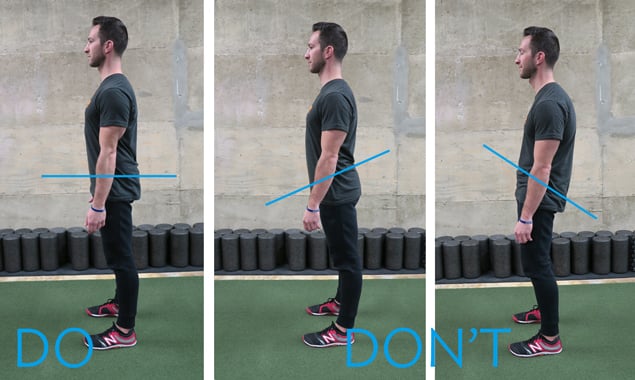
—Make your hips “flat.” You want to avoid an anterior tilt—when your hips drop forward (and consequentially pop out the booty). You also want to avoid a posterior tilt—when the butt tucks in and the knees buckle forward. Try this visualization: If you could place a board across your hips right now, which way would it lean? If it leans forward or backwards towards the floor, adjust to straighten it out. Sturniolo suggests tightening your butt muscles and standing tall to help reinforce a “neutral pelvis.”
—“Lift your sternum up from your belly button,” says Sturniolo. You want to pull the sternum up tall and elongate the torso until you feel it in the middle of your back between your shoulder blades. If you feel it in your lower back and your ribs are poking out, you’ve hyperextended. Remember alignment—your ribs should still be underneath the breast.
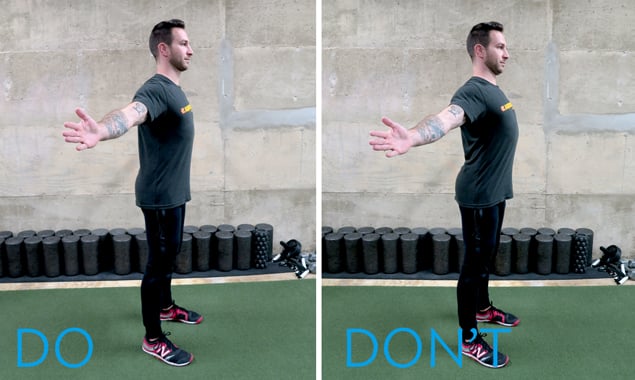
—Pull your shoulders back. You will feel this behind your shoulders and around your shoulder blades. Practice standing like your favorite anatomical poster—shoulders back, arms down by your side, palms facing forward.
—Align your ears with your shoulders. Tuck your chin, keep your eyes straight, and pull your head back. “You’ll feel it in the back of your neck and all the way down your spine,” says Sturniolo.
Pro tip: Sturniolo uses PostureScreen Mobile to analyze his clients’ posture. Upload four pictures of your stance (one from every side) to this app to pinpoint opportunities for improved posture.
2. Assume plank position.
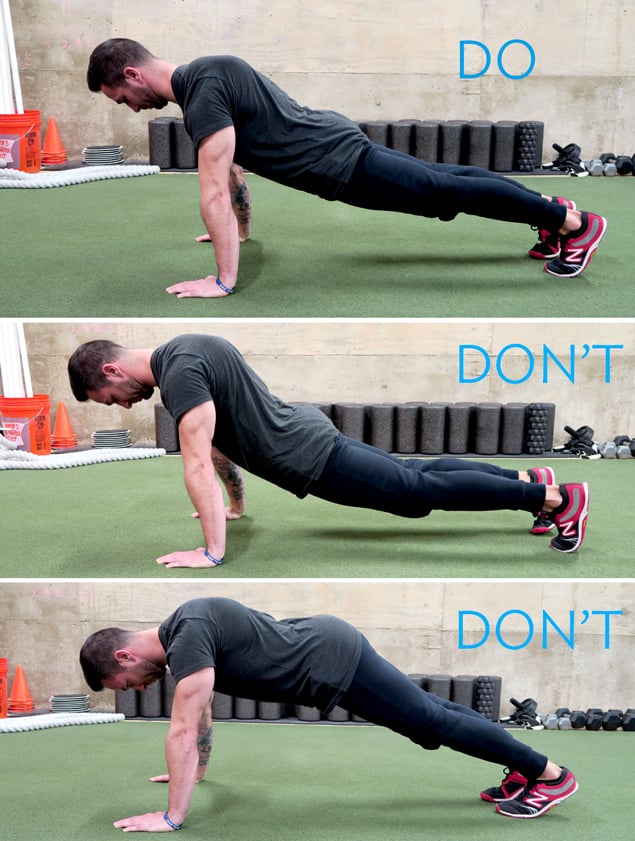
Doing planks will help align and strengthen your core, but you want your glutes and abs to be activated. “Get into good posture and squeeze,” says Sturniolo.
3. Find a counter.
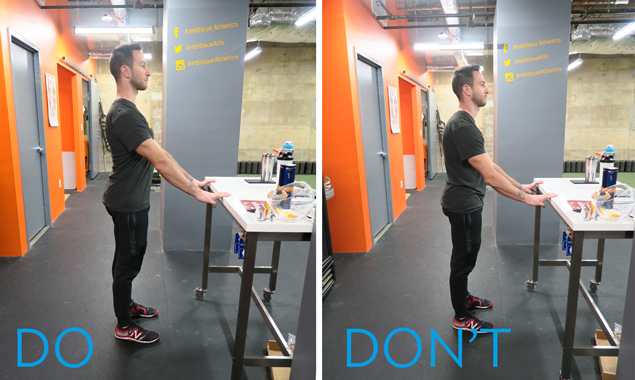
Stand tall in front of a counter—again engaging the glutes and abs—and press down on the counter with two hands. Note: the pushing is crucial, as it engages the muscles wrapping under your shoulders and armpits. As you get more stable, try pushing down with two fingers instead of a whole hand.
4. Get a standing desk.
“Get your boss to buy you a standing desk,” says Sturniolo, which shouldn’t be too hard because they’re trending in the workplace. “People become more active when standing,” says Sturniolo, who advocates for no sitting, ever.
5. Set a reminder to move every hour.
“Pick some kind of movement and just move for four minutes,” says Sturniolo. Stumped? Here’s a few suggestions: squats, lunges, planks, seal jacks, and bridges—for four minutes every hour. Even if you are the proud inhabitant of a cubicle, get up and start the trend, urges Sturniolo. Or re-energize with a stroll around the block. When you sit back down, be conscious of your posture so you’re not returning to slump-mode.

